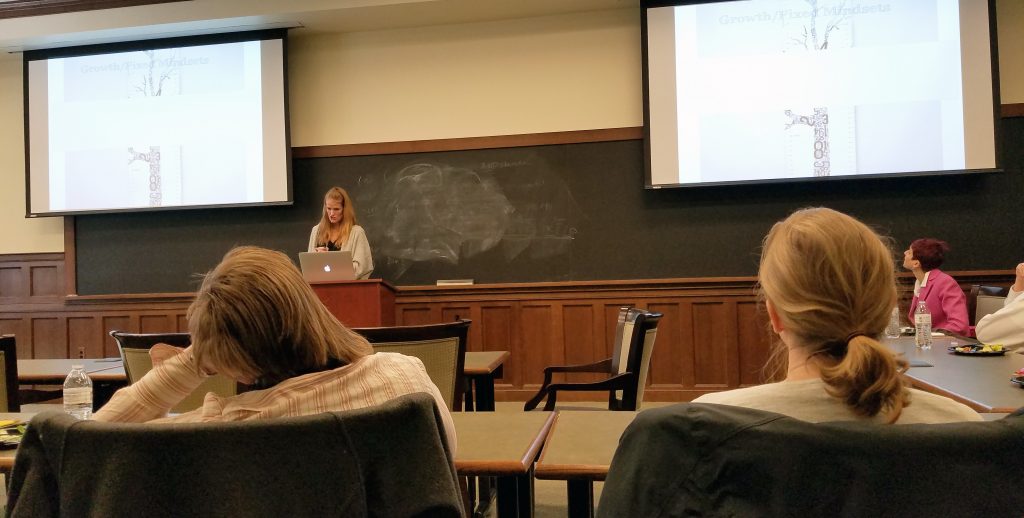
I recently attended a talk Crystal Hoyt gave to University of Richmond Law faculty about people’s perceptions of women leaders. The research uses something referred to by many as “implicit bias”: the idea that people may unwittingly (though there’s some fuzziness about this since once a bias is known it arguably becomes explicit) bring certain attitudes to their evaluation of women as leaders. In the past, Crystal has focused on the dual bind this places women in—on the one hand, they are seen as lacking in authority and are thus perceived as weak; on the other hand, if they act as strong leaders would, they are judged as being overly masculine and authoritative. This may make it difficult for women leaders to claim or earn legitimacy.
More interesting, perhaps, are recent research results in this area. Social psychologists are now working to identify whether and how “mindsets” predict attitudes towards leaders and especially attitudes towards female vs. male leaders. While I’m not sure how they identify mindsets—to be continued!—my understanding is that there is a continuum of mindset, from one extreme where people see all abilities as fixed, determined hereditarily, to those who have what is called a “growth mindset” and believe that all can be learned. Unsurprisingly, within the leadership literature, this binary corresponds neatly to a belief that “leaders are born” vs. one that believes “leaders can be taught.” (From a perspective close to my own research on 19th century intellectual thought, this continuum relates to the issue of whether or not ordinary people can learn self-governance.)
Researchers have now discovered that mindsets partially predict attitudes towards leaders. Those who have a “fixed mindset” are more likely to rely on attitudes towards gender to make judgments about whether women can lead effectively; while those with “growth mindsets” are less likely to do so.
All of this research is extremely important. While most of the talk focused on the role of gender, Crystal’s remarks and some research also consider the role of race. I would like to see this extended to age, as well.
If there is an implicit bias in our leadership (and other judgments) we need to understand why before we will be able to attenuate it. Crystal points us to one idea for fixing bias: http://biasinterrupters.org/
Perceptions of women leaders, of course, is an enormous topic, and today’s post only scratched the surface of some of the associated themes and research. If you have suggestions for more research, please share them in the comments.
